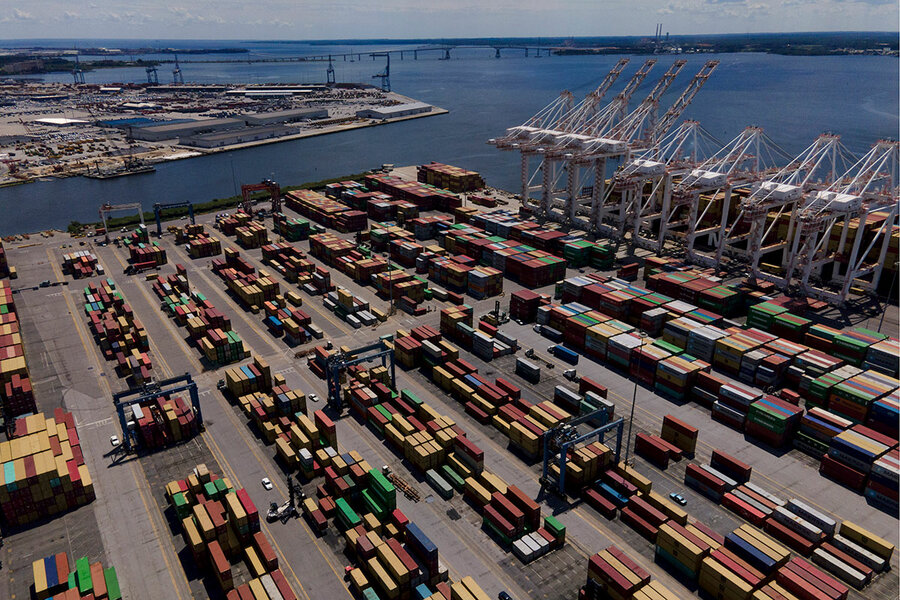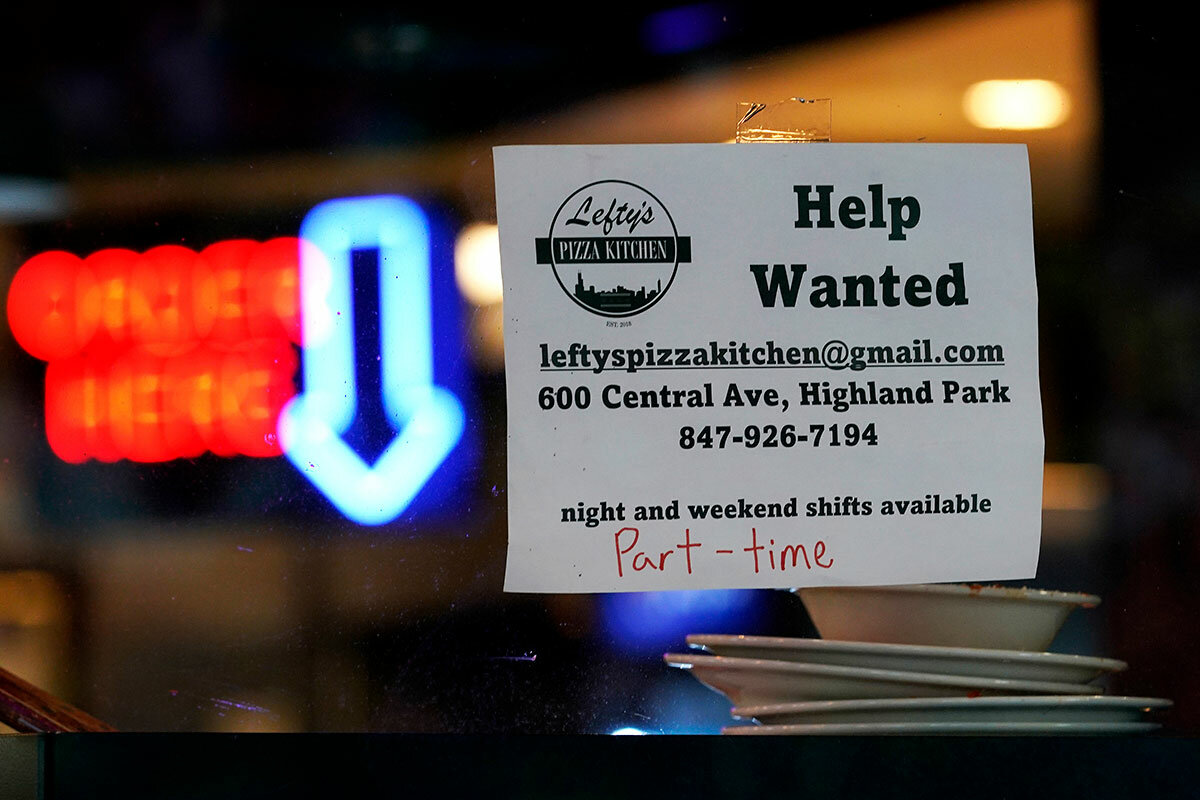Supply-chain snarls are receding. Will that curb inflation?
Loading...
Anticipating the end of supply-chain problems has proved akin to waiting for Godot: It never seems to come.
But many of the factors that kept goods in such short supply throughout the pandemic are improving – and those are good tidings for the economy and consumers, especially as the holiday shopping season approaches.
In August, the Global Supply Chain Pressure Index – a measure of supply constraints from the Federal Reserve Bank of New York – fell for the fourth month in a row from historic highs. Prices of plastics, used in everything from packaging to machinery parts, have begun to ease. The bottlenecks at West Coast ports have all but disappeared. And shipping prices have plunged from $11,000 per container a year ago to about $4,300 today, though that’s still more than double pre-pandemic rates.
Why We Wrote This
In the fight against inflation, it’s not all up to the Fed, whose rate hikes curb demand. It’s also a supply-side issue. So how close are we to solving supply-chain and labor shortages?
The global flow of goods is almost back to normal, Scott Sureddin, North America CEO with international shipper DHL, stated in August.
This is good news for consumers on two fronts: More goods will be available on store shelves and Christmas sales are likely to be more robust this year.
What remains to be seen is whether the supply-chain picture is resolving quickly and comprehensively enough that the nation can avoid recession. The Federal Reserve has aggressively raised interest rates in its push to tame inflation, making a recession-free slowdown or “soft landing” less likely. But some economists remain optimistic because improving supply chains could bring down inflation more quickly than many imagine, they say.
“I’m hopeful with normalization of supply-chain conditions that the Fed can engineer a decline in inflation without significant job losses,” says Rob Johnson, an economist at Notre Dame University. “That’s the golden outcome.”
When the pandemic hit, consumers dramatically shifted their spending away from services, such as travel and eating out, and toward goods, such as lumber and computers, as they outfitted home offices and hunkered down. Normally, supply chains handle increases in demand by producing more goods. But the pandemic also constrained production on many fronts, as factories closed or slowed their output to accommodate social distancing and other pandemic restrictions.
As prices began to surge a year ago, the Fed initially took no action, arguing that such supply-driven increases were transitory. But supply-chain woes kept building – fueled by pandemic shutdowns of entire metro areas in China, as well as the war in Ukraine and the surge in energy prices. Companies were able to charge customers unusually high prices, but many couldn’t increase supply.
Economists like Mr. Johnson believe this dynamic is behind the sharp rise in inflation – and that the resolution of supply-chain issues in coming months will solve the problem.
Others, however, say the speed of this normalization may come too slowly to bring inflation rates down dramatically.
“What we’ve seen is a rather orderly decline [in supply woes] rather than a rapid decline,” says Alfredo Romero, an economist of North Carolina A&T University in Greensboro. The shipping time from China to the U.S. has fallen from a peak of about 80 days at the beginning of the year to about 60 days by the beginning of September, he points out, but that’s still about 20 days longer than pre-pandemic levels.
And it’s not clear that the remaining kinks will be worked out anytime soon.
Take automakers. For more than a year, they had to ratchet back production because of a global computer chip shortage even though consumers were desperate to buy cars.
Now, the supply of chips is beginning to grow – but other problems have cropped up. Last month, Ford announced it would have to pay suppliers $1 billion more this quarter than anticipated because of shortages of many parts, including windshield wiper motors and even Ford’s famous blue oval nameplates.
“It does feel like Whac-A-Mole,” Ford CEO Jim Farley told Yahoo Money on Sept. 28. “I think we should count on this happening for some time.”
Then there’s the labor shortage. With workers in short supply, some companies haven’t been able to boost production. And people who are working are in a strong position to demand – and get – pay increases, which boosts costs for companies and thus potentially prices as well.
The way to douse those inflationary flames is to bring the job market back into balance, some economists say. That means either attracting more people back to the labor force or slowing the economy to the point that demand goes down and the need for more workers disappears.
The idea of “wage-price spirals” as a cause of inflation in general is a matter of debate among economists, but at the very least, Fed Chairman Jay Powell has called this year’s U.S. labor market “tight to an unhealthy level” in explaining the central bank’s inflation-fighting campaign.
The Fed can’t control the labor supply, but it can reduce demand by raising interest rates to the point that the economy slows.
“One of the main messages coming out of Fed communications is a sense of urgency around not being able to wait any longer for supply-chain issues to resolve themselves,” says Michael Gapen, U.S. economist with Bank of America Securities. Trying to avoid the mistakes of the inflationary 1970s, when the central bank cut interest rates prematurely, the Fed now has made cutting inflation back to 2% its “overarching focus,” as Mr. Powell put it in a speech in August.
Such language – and the unprecedented speed with which the Fed has raised interest rates – has changed Mr. Gapen’s outlook. Six months ago, he was in the “soft landing” camp, believing the U.S. economy could slow and get back to 2% inflation without actually contracting. Now, he sees a “hard landing” and has penciled in a recession sometime in the first nine months of next year.
Of course, inflation could still surprise on its way down, just as it surprised many economists with its surge on the way up.
“The quicker it resolves itself, the less work the Fed has to do,” Mr. Gapen says.







